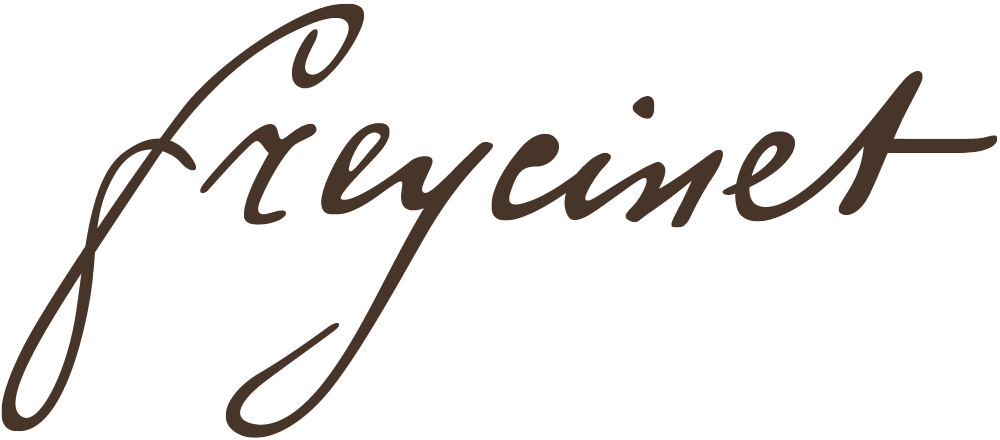Falkland Islands
The French vessel Uranie safely rounded Cape Horn on 6 February 1820, causing Rose de Freycinet to remark that "we were at last sailing in the ocean which washes the shores of France and we thought that we were already home." The Uranie anchored in the Bay of Good Success (coast of Argentina) only to be forced out to sea by a storm before anyone could go ashore. After the storm subsided, the Uranie had been pushed too far to the north to warrant returning to the Bay of Good Success, so Freycinet decided to continue to the Falklands to reconnoitre the eastern-most island of the group, then called Ile Conti. He decided to anchor in the Baie Française because of the apparent existence of animals that could be hunted for food and because he believed the islands to be inhabited and that he would be able to get news from France. "We considered ourselves to have reached the end of our long voyage" wrote Freycinet, "We had just entered the Atlantic and almost completed our circumnavigation. We indulged in the sweet hope that we would soon see our dear homeland and pay it homage with our numerous studies and collections that we had gathered. In short, we congratulated ourselves for our success and we were proud of having completed such a long expedition without any serious misfortunes or damage to the vessel."
The Uranie entered the Baie Française on a clear day with a favourable breeze. In spite of the usual precautions taken when approaching unfamiliar shores, the ship hit a submerged rock and suddenly stopped with a violent jolt. Pieces of wood floating in the water suggested that a serious hole had been pierced in the hull. Freycinet immediately ordered the crew to the pumps, but the rising water in the hold made him realise that he would have to run the Uranie aground in order to save the crew and collections. While attempting to reach a sandy shore inside the bay, night fell and the breeze dropped. To run the Uranie into the steep rocky shore would have resulted in certain loss of life. "More unfortunate even than La Pérouse's crew," wrote Freycinet, "nobody would ever have known our fate, everything would have been swallowed by the deep sea." The crew manned the pumps continuously, singing to maintain their spirits and stave off their fatigue. At 3 o'clock on the morning of 15 February, 1820, the Uranie was run aground on the south side of the bay.
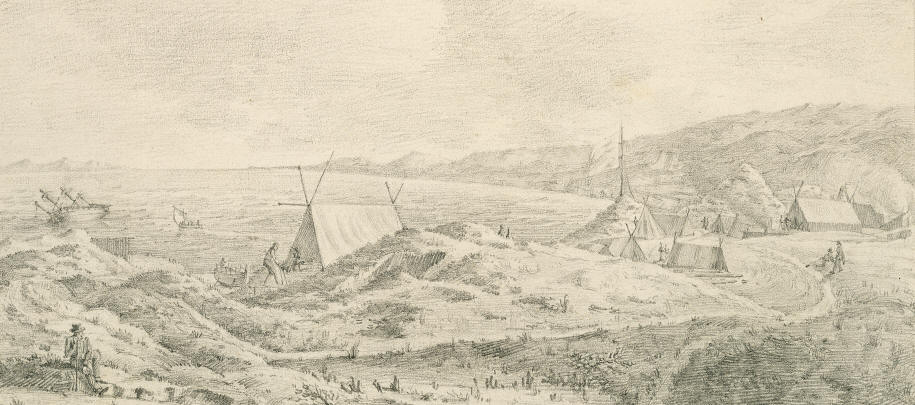
According to his report, Freycinet's first concern, once the Uranie had been safely run aground, was to safeguard the expedition's papers and journals. In Rose's words: "What a cruel blow it would be for us to witness the disappearance of two long years of painstaking labour!" They managed to save the papers and journals, but unfortunately lost some of the collections that had been in the hold. They did manage to save, however, several merino sheep that MacArthur had given them at Port Jackson. These were taken ashore and well looked after, even when food became scarce.
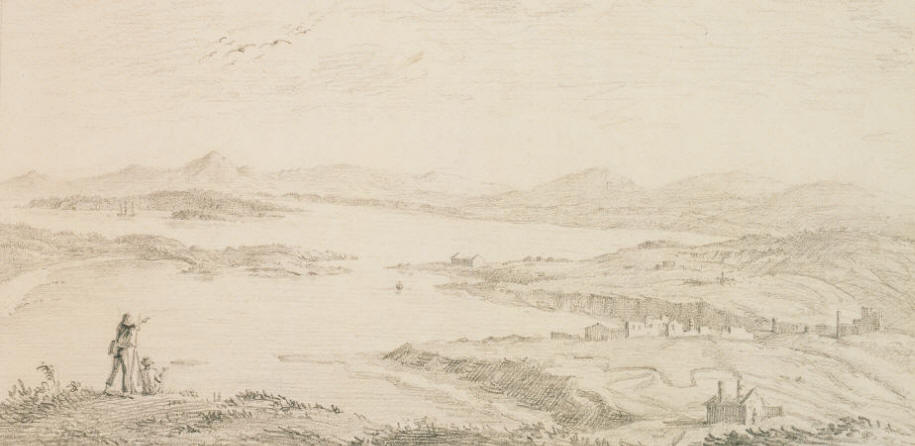
The party found the settlement uninhabited and in ruins. Quoy described his emotional response to the ruins of Bougainville's colony, where, he wrote, "once lived French people; here our language was once spoken, I said to myself, and hard-working families may have tasted happiness. We glimpsed the site of the fort, the walls of a church, an elegant house built of stone which must have belonged to the governor." They observed, written in charcoal on the wall of one house, inscriptions detailing visits of other ships to the island. None of the buildings had a roof and the colony was deemed unsuitable for habitation. The seven members of the party spent the night in a large brick oven.
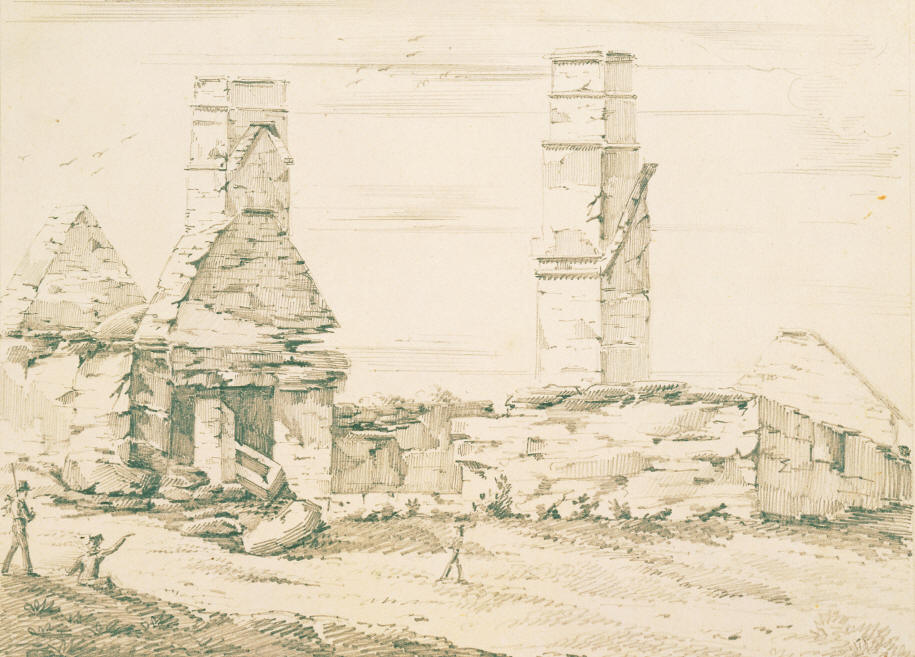
A group of men were assigned the job of hunters; they killed seals, birds, penguins and several horses which the crew ate, with varying levels of appreciation. In Guam, the Governor had given the ship's chaplain, Abbé Quélen, a large sack of flour made from a local plant, because he found it made a good hair powder. The sack was salvaged after the shipwreck and the cook requisitioned it to make bread. More sacks were found which had been taken on board as pig feed. "We are all happy;" wrote Rose, the Abbé is delighted to be eating his curling powder, while I am pleased to share my piglets' dinner!" She became less pleased over the following weeks, eventually describing the buns as unpleasant and not nutritious.
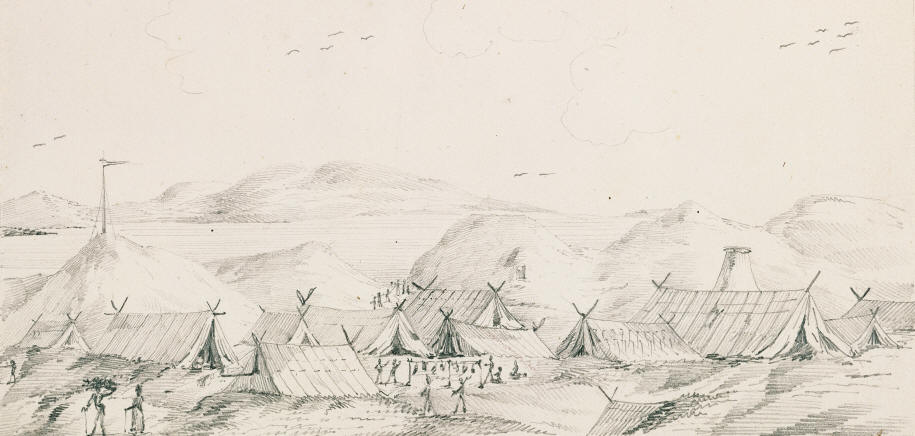
Towards the end of March, 1820, an American ship the Mercury came into the Baie Française to do repairs on its way to the Pacific. Freycinet managed to negotiate a passage for the crew of the Uranie on board the Mercury which weighed anchor on 27 April and headed towards Montevideo. During the passage, Freycinet purchased the Mercury and renamed her the Physicienne.
The French vessel Uranie safely rounded Cape Horn on 6 February 1820, causing Rose de Freycinet to remark that "we were at last sailing in the ocean which washes the shores of France and we thought that we were already home." The Uranie anchored in the Bay of Good Success (coast of Argentina) only to be forced out to sea by a storm before anyone could go ashore. After the storm subsided, the Uranie had been pushed too far to the north to warrant returning to the Bay of Good Success, so Freycinet decided to continue to the Falklands to reconnoitre the eastern-most island of the group, then called Ile Conti. He decided to anchor in the Baie Française because of the apparent existence of animals that could be hunted for food and because he believed the islands to be inhabited and that he would be able to get news from France. "We considered ourselves to have reached the end of our long voyage" wrote Freycinet, "We had just entered the Atlantic and almost completed our circumnavigation. We indulged in the sweet hope that we would soon see our dear homeland and pay it homage with our numerous studies and collections that we had gathered. In short, we congratulated ourselves for our success and we were proud of having completed such a long expedition without any serious misfortunes or damage to the vessel."
The Uranie entered the Baie Française on a clear day with a favourable breeze. In spite of the usual precautions taken when approaching unfamiliar shores, the ship hit a submerged rock and suddenly stopped with a violent jolt. Pieces of wood floating in the water suggested that a serious hole had been pierced in the hull. Freycinet immediately ordered the crew to the pumps, but the rising water in the hold made him realise that he would have to run the Uranie aground in order to save the crew and collections. While attempting to reach a sandy shore inside the bay, night fell and the breeze dropped. To run the Uranie into the steep rocky shore would have resulted in certain loss of life. "More unfortunate even than La Pérouse's crew," wrote Freycinet, "nobody would ever have known our fate, everything would have been swallowed by the deep sea." The crew manned the pumps continuously, singing to maintain their spirits and stave off their fatigue. At 3 o'clock on the morning of 15 February, 1820, the Uranie was run aground on the south side of the bay.

Above: The wrecked Uranie,
boats evacuating collections off the vessel and the camp on shore
click here for the full zoomable image
At daybreak, the crew of the Uranie regarded the land where they had
been so unexpectedly wrecked with feelings of anxiety. The shore
appeared arid, everywhere there were sand dunes, bare mountains and
the ground was devoid of even the smallest of shrubs. "In many
respects," wrote Freycinet, "one could have compared the barrenness
to that which so grieved our eyes in Shark Bay."click here for the full zoomable image
According to his report, Freycinet's first concern, once the Uranie had been safely run aground, was to safeguard the expedition's papers and journals. In Rose's words: "What a cruel blow it would be for us to witness the disappearance of two long years of painstaking labour!" They managed to save the papers and journals, but unfortunately lost some of the collections that had been in the hold. They did manage to save, however, several merino sheep that MacArthur had given them at Port Jackson. These were taken ashore and well looked after, even when food became scarce.

Above: Drawing made from a high point of French
Bay in the Falkland Islands
In the distance to the left is the wrecked Uraine and on the right are ruined buildings
On 18 February, 1820, Freycinet sent sub-lieutenant Auguste Bérand
to Saint Louis cove where Louis Antoine de Bougainville had
established a French colony in 1764. The colony was relatively
short-lived, being handed over, for a substantial sum, to Spain in
1767. Not knowing if there remained any inhabitants at the Saint
Louis settlement, Freycinet asked Bérand, on seeing anyone, to
apprise them of the situation that the crew of the Uranie found
itself in, and to get help if possible. Ship's surgeon Quoy and
midshipman Guérin were also part of the expedition.In the distance to the left is the wrecked Uraine and on the right are ruined buildings
The party found the settlement uninhabited and in ruins. Quoy described his emotional response to the ruins of Bougainville's colony, where, he wrote, "once lived French people; here our language was once spoken, I said to myself, and hard-working families may have tasted happiness. We glimpsed the site of the fort, the walls of a church, an elegant house built of stone which must have belonged to the governor." They observed, written in charcoal on the wall of one house, inscriptions detailing visits of other ships to the island. None of the buildings had a roof and the colony was deemed unsuitable for habitation. The seven members of the party spent the night in a large brick oven.

Above: Drawing of ruined buildings at the Saint
Louis settlement in the Falklands in 1820
By 29 February, the camp in the Baie Française was well and truly
established. Rose wrote that "a tent has been pitched for the
carpenters and another for the blacksmiths. Our camp looks like a
small village; there is a tent for Louis, one for the equipment and
the records where we will also take our meals, one for the staff,
one for the midshipmen and one for the volunteers. Three other tents
have been pitched, for the hospital, the sailors' barracks and the
masters respectively. There are also small tents for the cooks and
the supplies. At some distance from the camp is the powder magazine
where arms and ammunition are kept under lock and key."A group of men were assigned the job of hunters; they killed seals, birds, penguins and several horses which the crew ate, with varying levels of appreciation. In Guam, the Governor had given the ship's chaplain, Abbé Quélen, a large sack of flour made from a local plant, because he found it made a good hair powder. The sack was salvaged after the shipwreck and the cook requisitioned it to make bread. More sacks were found which had been taken on board as pig feed. "We are all happy;" wrote Rose, the Abbé is delighted to be eating his curling powder, while I am pleased to share my piglets' dinner!" She became less pleased over the following weeks, eventually describing the buns as unpleasant and not nutritious.

Above: Drawing of the camp in the Falkland Islands
in 1820
During the stay in the Falklands, the group of hunters managed to
cause a bush fire, which was cause for concern for several days
until it was extinguished by rain. Meanwhile, Freycinet and his
officers continued with their scientific observations. The
Uranie having been declared irreparable, the sailors set about
repairing and refitting the ship's longboat which Freycinet planned
to send to Montevideo. There the crew would charter a ship to rescue
the crew and cargo of the Uranie. Towards the end of March, 1820, an American ship the Mercury came into the Baie Française to do repairs on its way to the Pacific. Freycinet managed to negotiate a passage for the crew of the Uranie on board the Mercury which weighed anchor on 27 April and headed towards Montevideo. During the passage, Freycinet purchased the Mercury and renamed her the Physicienne.
